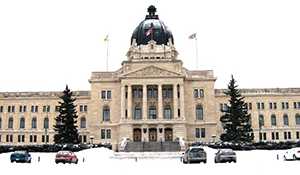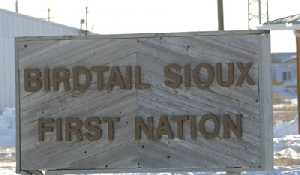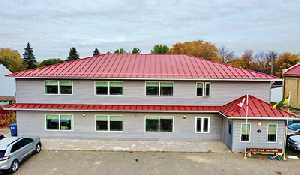Census numbers may help Moosomin minimize funding cut
February 22, 2017, 2:11 am
Kevin Weedmark


Saskatchewan municipalities were warned at the recent Saskatchewan Urban Municipalities Association convention to expect a reduction in revenue sharing grants in 2017.
One percentage point of the five-per-cent provincial sales tax is dedicated to municipal revenue sharing.
The amount collected in PST can decline in slower economic times, resulting in less funding to be shared with municipalities.
It is expected that PST income will be down, leading to a smaller overall pool for revenue sharing grants in the 2017 provincial budget.
However, revenue sharing is distributed to each community based on a formula that includes a small base grant and a per-capita grant.
Because Moosomin’s population is up by 10.4 per cent in the 2016 census from the 2011 census—which was used to calculate the per-capital grant last year—the town will be in a better position than most towns when it comes to revenue sharing.
The provincial population grew by 6.2 per cent in the latest census. Because Moosomin grew more quickly than the provincial average, its share of the funding pool will be slightly higher.
The World-Spectator contacted Saskatchewan’s Ministry of Government relations last week to confirm if and how the 2016 census figures will impact the 2017 revenue sharing grants.
The ministry responded with the following statement just before our press deadline:
“On Feb. 8, 2017, Statistics Canada released the 2016 Census population figures, which will be used to help calculate the 2017-18 Municipal Revenue Sharing (MRS) program grants for Saskatchewan municipalities.
“Municipal Revenue Sharing (MRS) grants have been based on a formula that includes using the latest available census population data, along with one percentage point of Provincial Sales Tax (PST) revenue collected, which is linked to the performance of the province’s economy.
“The 2017-18 Municipal Revenue Sharing (MRS) grants for each municipality, and the final figures in the formula used to calculate those MRS grants, will be available after the provincial budget is announced on March 22.”
The higher population counts will also cost the town some money, as RCMP costs and the Southeast Regional Library levy are based on the census population figures.
While the news that the new census figures will be used in 2017 revenue sharing calculations is good for Moosomin, it is bad news for communities that lost residents in the 2016 census.
The town of Whitewood, for example, lost 9.3 per cent of its population, giving it a smaller share of a smaller revenue-sharing pool.



































